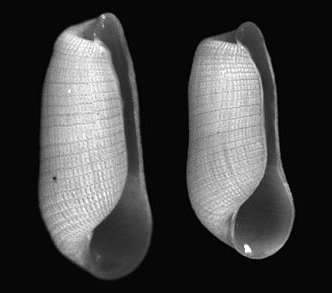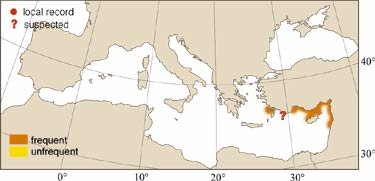
|
Relevant Synonyms
Misidentification
|
|
| photo: S. Gofas |
|
SHORT
DESCRIPTION
color :
dead shells are white.
common size :
about 4 mm. |
DISTINGUISHING CHARACTERISTICS
BIOLOGY / ECOLOGY
habitat :
in the Mediterranean this species has been dredged from sandy and muddy bottoms 40-70 m deep (van Aartsen et. al., 1989). |
|
1st
Mediterranean record
|

|
|
DISTRIBUTION
|
ESTABLISHMENT SUCCESS
speculated reasons for success :
|
|
|
MODE OF
INTRODUCTION |
IMPORTANCE TO
HUMANS |
|
KEY
REFERENCES
|
|
|
 Bulla fourierii Audouin, 1826 [Egypt]
Bulla fourierii Audouin, 1826 [Egypt]